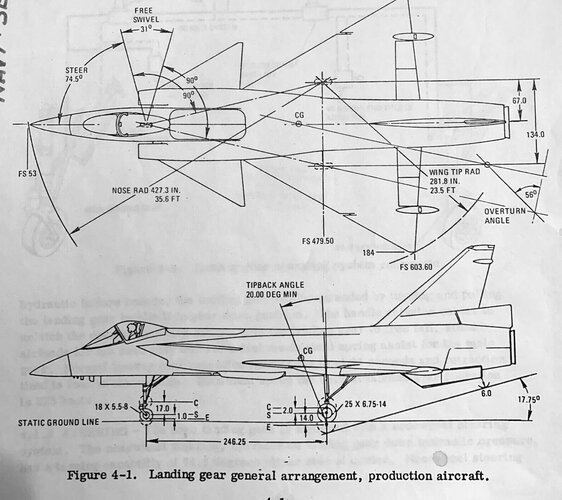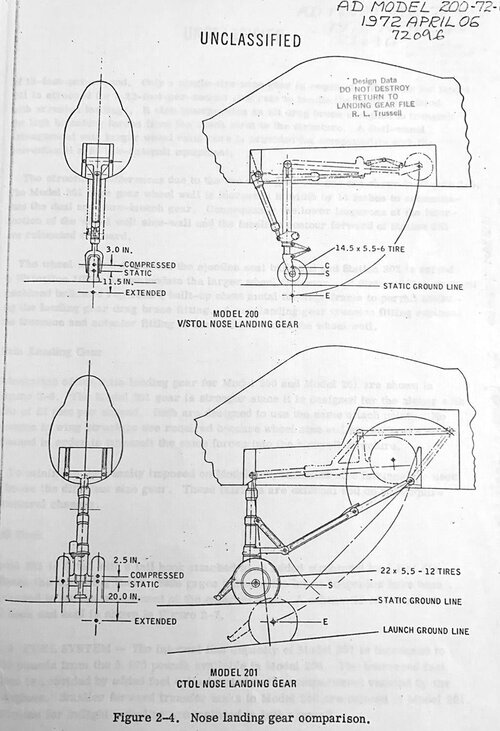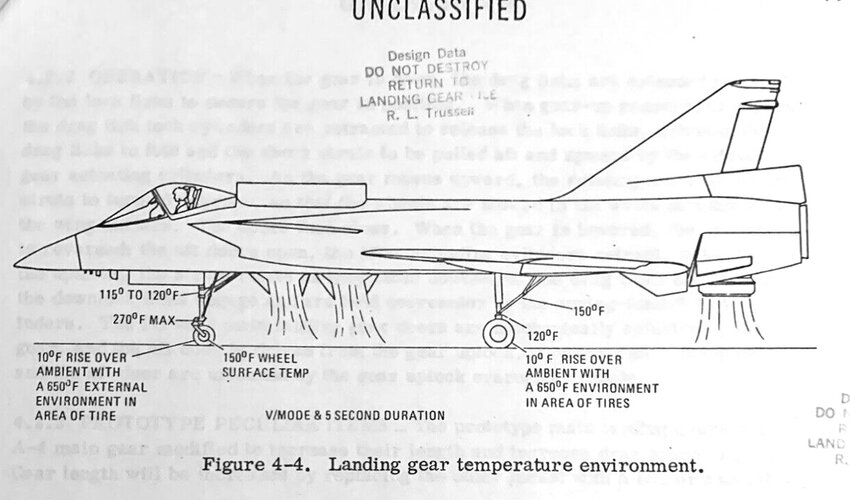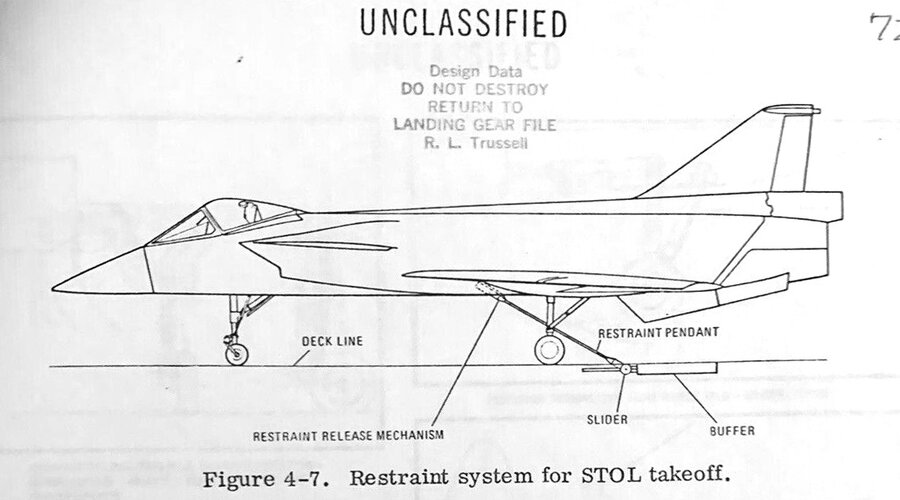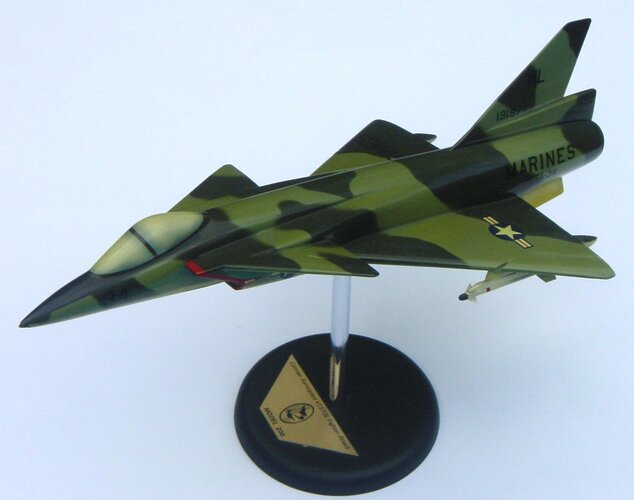You are using an out of date browser. It may not display this or other websites correctly.
You should upgrade or use an alternative browser.
You should upgrade or use an alternative browser.
General Dynamics Convair Models 200 / 201 / 218 Sea Control Ship fighters
- Thread starter overscan (PaulMM)
- Start date
- Joined
- 3 June 2006
- Messages
- 3,092
- Reaction score
- 3,939
Some pictures showing a Convair Model 200 wind tunnel or an engineering modell were posted recently at SDASM Flickr Archives. IMHO here the three most interesting pictures:
View: https://flic.kr/p/2p3Qm51
View: https://flic.kr/p/2p3Mwq8
View: https://flic.kr/p/2p2od2B
View: https://flic.kr/p/2p3Qm51
View: https://flic.kr/p/2p3Mwq8
View: https://flic.kr/p/2p2od2B
- Joined
- 29 January 2008
- Messages
- 914
- Reaction score
- 2,031
Some things I noticed: the model 200 had a significantly higher thrust at takeoff (~37.5 klbs) than it's maximum thrust in level flight (~28.1 klbs). The same is true for for many VTOL/STOVL designs like including the VFW VAK 191, Mirage III-V, Do 31, Yak-38 and Yak-141. Meanwhile the F-35B and Harrier both have the same max thrust at takeoff and level flight (Harrier because they don't have an AB, F-35 because its fan happens to add about the same thrust as its AB). I am not sure if/how much that helps in STO, but it does mean CTO and VTOL are a lot nearer. (edit1: I should say "installed thrust", obviously actual thrust differs depending on flight conditions) (edit4: I am fucking stupid, the Harrier had the water injection thingy which increased thrust by 50% for 90 seconds)
Additionally I don't quite buy the the "the lift engines are dead weight, therefore the F-35 lift fan is better" argument. RR/Allision were designing lift engines with a 20:1 TW back in the 70s. The lift fan system also weights a shitton ("dead weight"), very possibly more than lift engines would. The lift fan probably has other advantages, e.g. better fuel economy in VTOL or better lifecycle cost. edit3: D'oh, the lift system has also a cooler exhaust and doesn't melt carrier decks as easily.
And lastly, the F135 has a very low bypass ratio, which means that if you think about the whole engine system, the F-35B goes from a "high" bypass design in VTOL to a low bypass design in level flight. Meanwhile the Model 200 would go from low bypass at VTOL to "high" bypass at level flight. Not sure that meany anything though, never mind what it means.
Edit2: on another note, the 30klbs MTOW figure is obvious bullshit imho unless you are in a high and hot scenario. The harrier does that, with a significantly lower thrust and as a smaller plane.
Additionally I don't quite buy the the "the lift engines are dead weight, therefore the F-35 lift fan is better" argument. RR/Allision were designing lift engines with a 20:1 TW back in the 70s. The lift fan system also weights a shitton ("dead weight"), very possibly more than lift engines would. The lift fan probably has other advantages, e.g. better fuel economy in VTOL or better lifecycle cost. edit3: D'oh, the lift system has also a cooler exhaust and doesn't melt carrier decks as easily.
And lastly, the F135 has a very low bypass ratio, which means that if you think about the whole engine system, the F-35B goes from a "high" bypass design in VTOL to a low bypass design in level flight. Meanwhile the Model 200 would go from low bypass at VTOL to "high" bypass at level flight. Not sure that meany anything though, never mind what it means.
Edit2: on another note, the 30klbs MTOW figure is obvious bullshit imho unless you are in a high and hot scenario. The harrier does that, with a significantly lower thrust and as a smaller plane.
Last edited:
XP67_Moonbat
ACCESS: Top Secret
- Joined
- 16 January 2008
- Messages
- 2,270
- Reaction score
- 531
If you have some deep pockets, this is currently selling on Ebay. Gotta admit though, it's a definite catch. Not only do you get a rare model, you get some rare docs as well. It's a win-win :
Convair V/STOL Model 200 Prototype Factory In-house Rare Like Topping Model
Item description from the seller:
As found, pictures to determine condition. To include rare relevant unclassified documents dated 26 Feb, 1973 and original Executive Summary. Free shipping and discounts may apply. Making room for other models. The model is 14” long.

Convair V/STOL Model 200 Prototype Factory In-house Rare Like Topping Model
Item description from the seller:
As found, pictures to determine condition. To include rare relevant unclassified documents dated 26 Feb, 1973 and original Executive Summary. Free shipping and discounts may apply. Making room for other models. The model is 14” long.

Convair V/STOL Model 200 Prototype Factory In-house Rare Like Topping Model | eBay
Making room for other models. The model is 14” long.
www.ebay.com
Attachments
-
 Model200-01.jpg170 KB · Views: 207
Model200-01.jpg170 KB · Views: 207 -
 Model200-02.jpg220.9 KB · Views: 168
Model200-02.jpg220.9 KB · Views: 168 -
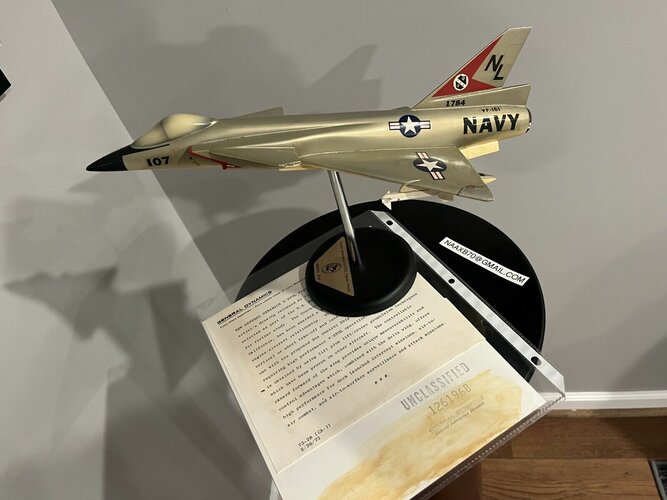 Model200-03.jpg233 KB · Views: 151
Model200-03.jpg233 KB · Views: 151 -
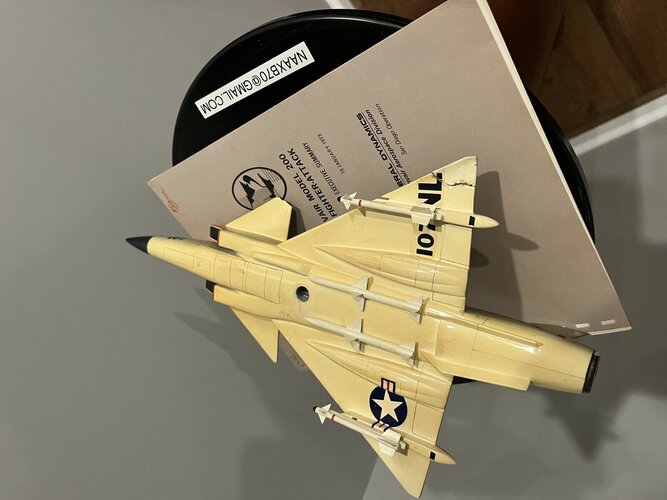 Model200-04.jpg219.4 KB · Views: 148
Model200-04.jpg219.4 KB · Views: 148 -
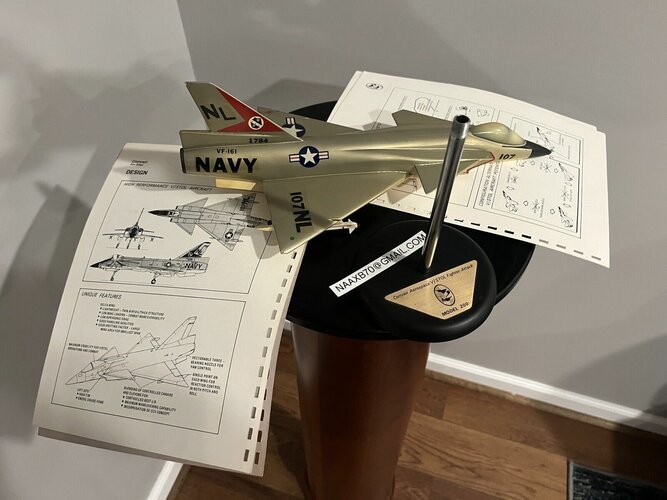 Model200-05.jpg257.1 KB · Views: 142
Model200-05.jpg257.1 KB · Views: 142 -
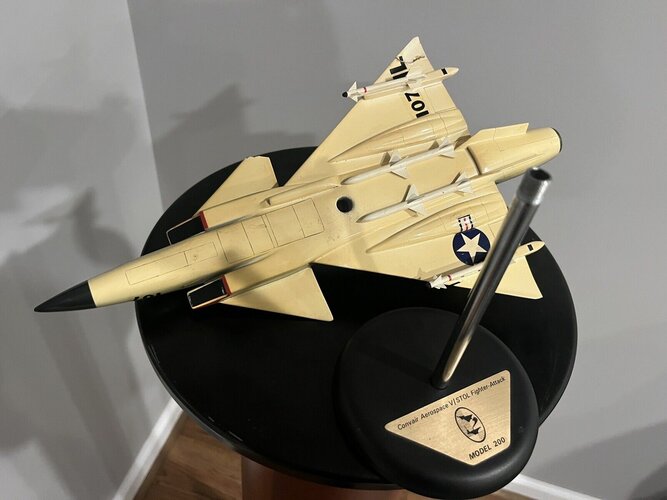 Model200-06.jpg205.2 KB · Views: 129
Model200-06.jpg205.2 KB · Views: 129 -
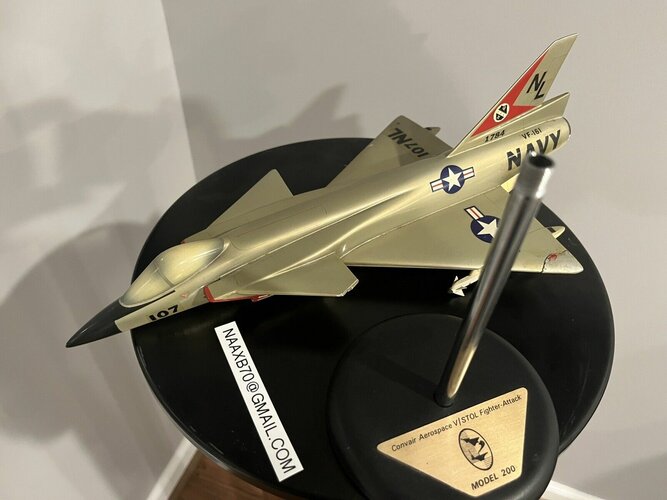 Model200-07.jpg195.1 KB · Views: 125
Model200-07.jpg195.1 KB · Views: 125 -
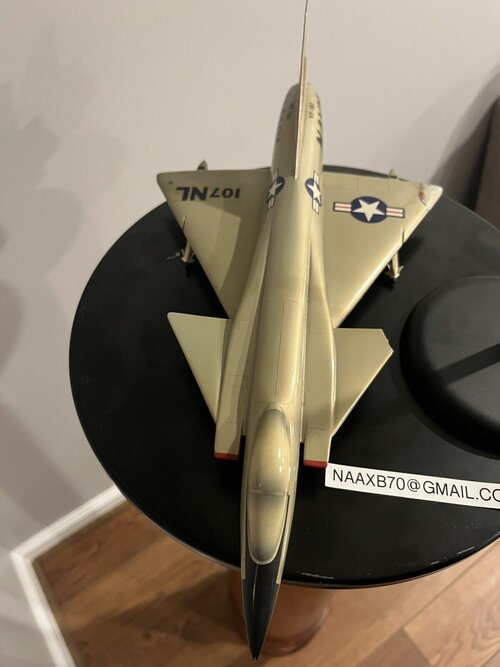 Model200-08.jpg175 KB · Views: 111
Model200-08.jpg175 KB · Views: 111 -
 Model200-09.jpg167.5 KB · Views: 101
Model200-09.jpg167.5 KB · Views: 101 -
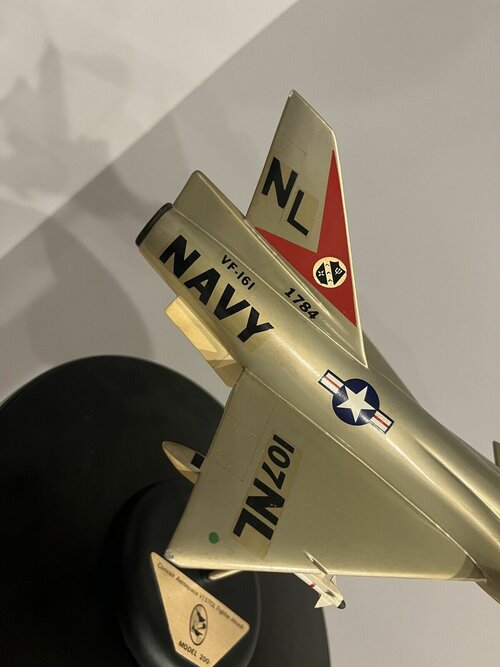 Model200-10.jpg185.1 KB · Views: 100
Model200-10.jpg185.1 KB · Views: 100 -
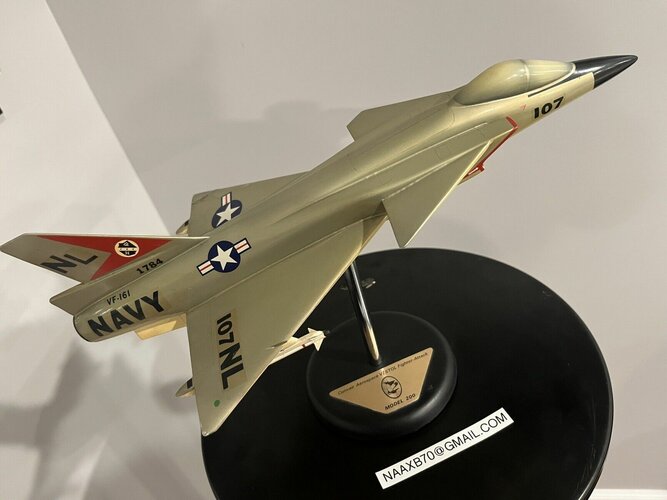 Model200-11.jpg181.4 KB · Views: 222
Model200-11.jpg181.4 KB · Views: 222
Last edited by a moderator:
- Joined
- 27 December 2005
- Messages
- 17,701
- Reaction score
- 26,086
Nice. I took the liberty of adding better quality images to your post.
Its a lovely model and some interesting documents, hope it finds a good home with a forum member
Its a lovely model and some interesting documents, hope it finds a good home with a forum member
XP67_Moonbat
ACCESS: Top Secret
- Joined
- 16 January 2008
- Messages
- 2,270
- Reaction score
- 531
Thanks! Yeah, actually did save the pics from eBay. Unfortunately they didn't save as jpg's and were unable to be uploaded here. So I went back and took screenshots which I then uploaded with my post.Nice. I took the liberty of adding better quality images to your post.
Its a lovely model and some interesting documents, hope it finds a good home with a forum member
Thank you, though.
- Joined
- 27 December 2005
- Messages
- 17,701
- Reaction score
- 26,086
An hour to go and 'just' $300 US. Not too bad.
- Joined
- 27 December 2005
- Messages
- 17,701
- Reaction score
- 26,086
US $739.99. Sold.
- Joined
- 27 December 2005
- Messages
- 17,701
- Reaction score
- 26,086
View: https://www.flickr.com/photos/sdasmarchives/53718768649/in/photostream/
View: https://www.flickr.com/photos/sdasmarchives/53718863220/in/photostream/
View: https://www.flickr.com/photos/sdasmarchives/53718768669/in/photostream/
View: https://www.flickr.com/photos/sdasmarchives/53717523982/in/photostream/
View: https://www.flickr.com/photos/sdasmarchives/53718432486/in/photostream/
View: https://www.flickr.com/photos/sdasmarchives/53718432491/in/photostream/
View: https://www.flickr.com/photos/sdasmarchives/53717524002/in/photostream/
View: https://www.flickr.com/photos/sdasmarchives/53718432526/in/photostream/
View: https://www.flickr.com/photos/sdasmarchives/53718863275/in/photostream/
View: https://www.flickr.com/photos/sdasmarchives/53718863270/in/photostream/
https://www.flickr.com/photos/sdasmarchives/53718768739/in/photostream/
https://www.flickr.com/photos/sdasmarchives/53717524022/in/photostream/
View: https://www.flickr.com/photos/sdasmarchives/53718863220/in/photostream/
View: https://www.flickr.com/photos/sdasmarchives/53718768669/in/photostream/
View: https://www.flickr.com/photos/sdasmarchives/53717523982/in/photostream/
View: https://www.flickr.com/photos/sdasmarchives/53718432486/in/photostream/
View: https://www.flickr.com/photos/sdasmarchives/53718432491/in/photostream/
View: https://www.flickr.com/photos/sdasmarchives/53717524002/in/photostream/
View: https://www.flickr.com/photos/sdasmarchives/53718432526/in/photostream/
View: https://www.flickr.com/photos/sdasmarchives/53718863275/in/photostream/
View: https://www.flickr.com/photos/sdasmarchives/53718863270/in/photostream/
https://www.flickr.com/photos/sdasmarchives/53718768739/in/photostream/
https://www.flickr.com/photos/sdasmarchives/53717524022/in/photostream/
Attachments
-
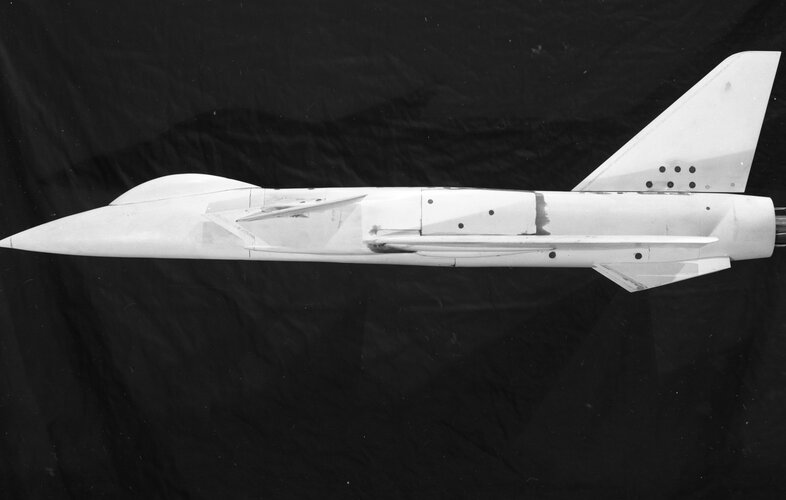 53717524022_cb72f07bba_o.jpg184.5 KB · Views: 89
53717524022_cb72f07bba_o.jpg184.5 KB · Views: 89 -
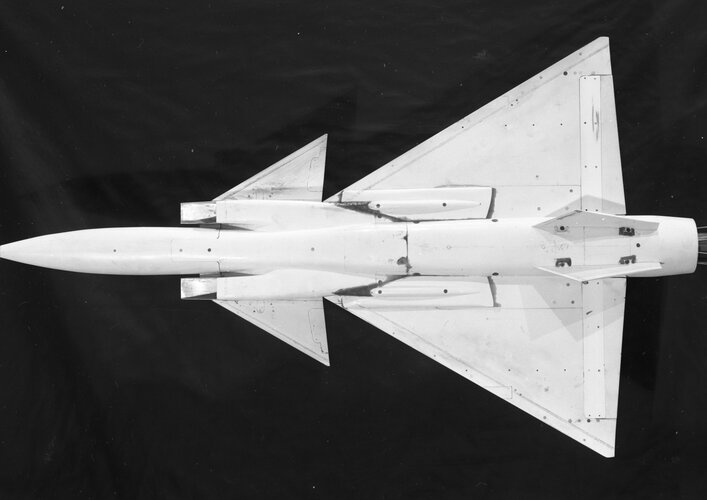 53718768739_d708628fbd_o.jpg228.3 KB · Views: 64
53718768739_d708628fbd_o.jpg228.3 KB · Views: 64 -
 53718863270_fc153dc66d_o.jpg232.5 KB · Views: 43
53718863270_fc153dc66d_o.jpg232.5 KB · Views: 43 -
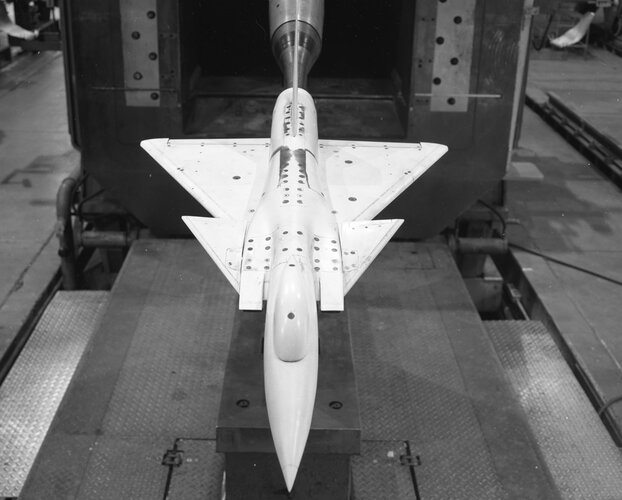 53718863275_13e2c1aefa_o.jpg322.1 KB · Views: 44
53718863275_13e2c1aefa_o.jpg322.1 KB · Views: 44 -
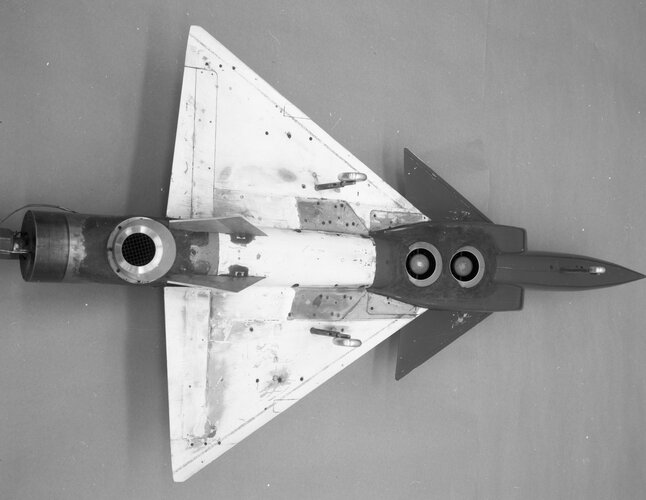 53718432526_8687b0d0ba_o.jpg361.2 KB · Views: 43
53718432526_8687b0d0ba_o.jpg361.2 KB · Views: 43 -
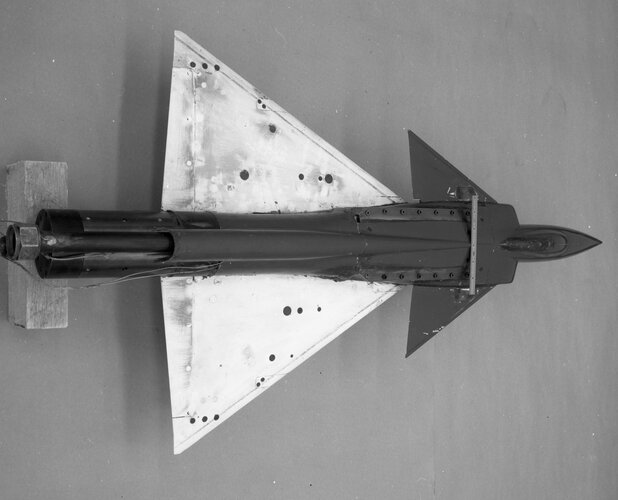 53717524002_9ecd487b39_o.jpg378.5 KB · Views: 50
53717524002_9ecd487b39_o.jpg378.5 KB · Views: 50 -
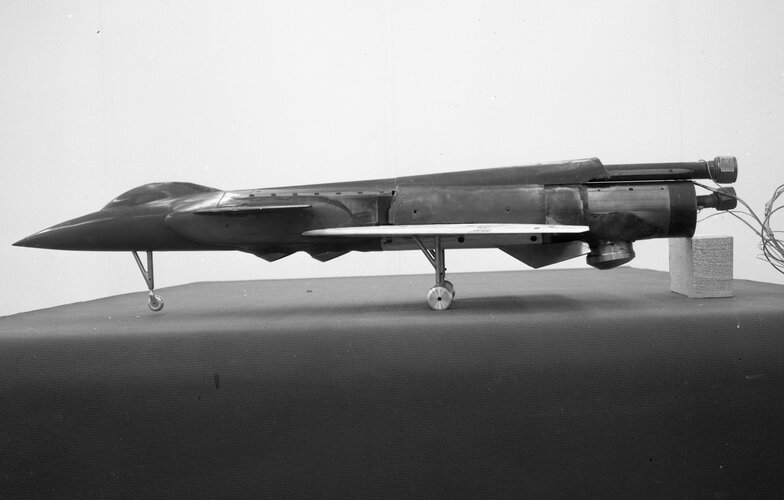 53718432491_813475147a_o.jpg297.7 KB · Views: 47
53718432491_813475147a_o.jpg297.7 KB · Views: 47 -
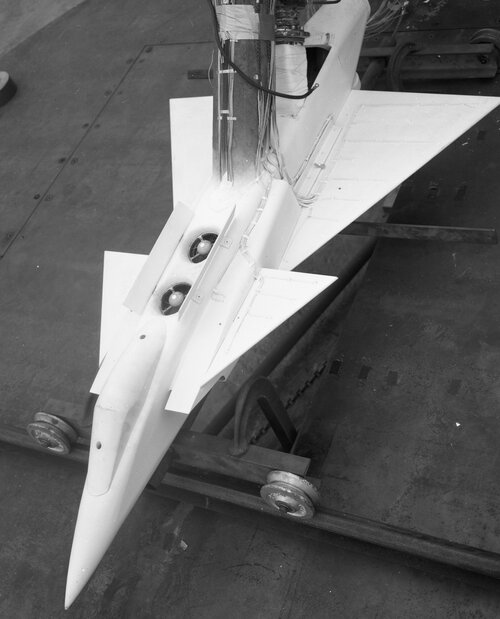 53718432486_813475147a_o.jpg377.8 KB · Views: 48
53718432486_813475147a_o.jpg377.8 KB · Views: 48 -
 53717523982_d61112de9a_o.jpg257.1 KB · Views: 53
53717523982_d61112de9a_o.jpg257.1 KB · Views: 53 -
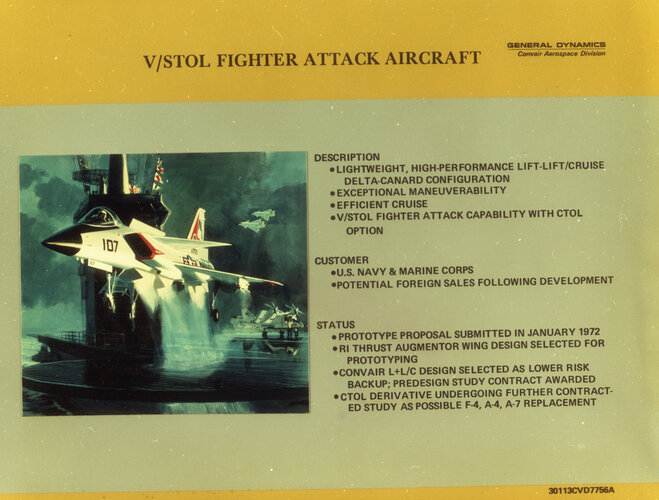 53718768669_c3e2f4e5a2_o.jpg538.8 KB · Views: 52
53718768669_c3e2f4e5a2_o.jpg538.8 KB · Views: 52 -
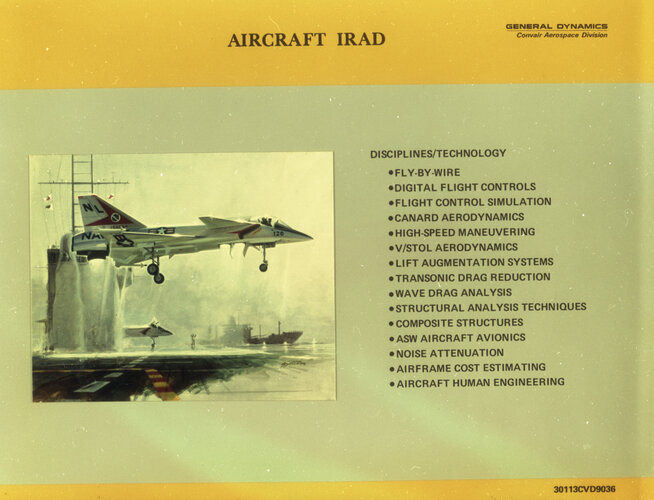 53718863220_1e9e08affc_o.jpg503.6 KB · Views: 63
53718863220_1e9e08affc_o.jpg503.6 KB · Views: 63 -
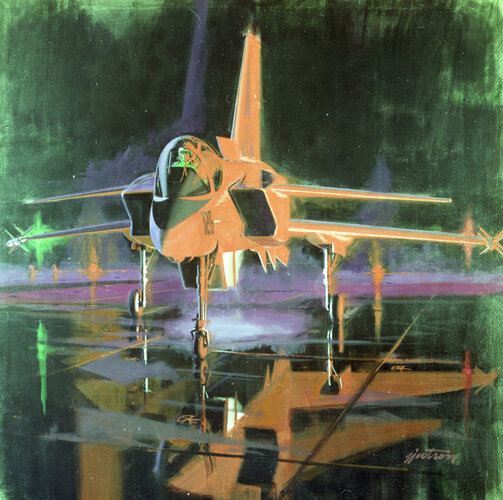 53718768649_871eddab69_o.jpg1,010.9 KB · Views: 77
53718768649_871eddab69_o.jpg1,010.9 KB · Views: 77
apparition13
I really should change my personal text
- Joined
- 27 January 2017
- Messages
- 604
- Reaction score
- 1,098
ASW aircraft avionics? What does that mean?
- Joined
- 27 December 2005
- Messages
- 17,701
- Reaction score
- 26,086
This is a slide on general aircraft IRAD (Internal Research and Development) activities ongoing at Convair (San Diego). Convair bid on the VSX (S-3 Viking) program.ASW aircraft avionics? What does that mean?
apparition13
I really should change my personal text
- Joined
- 27 January 2017
- Messages
- 604
- Reaction score
- 1,098
Weird. The slide makes it look like it's all related to the 200 program.This is a slide on general aircraft IRAD (Internal Research and Development) activities ongoing at Convair (San Diego). Convair bid on the VSX (S-3 Viking) program.
- Joined
- 3 June 2006
- Messages
- 3,092
- Reaction score
- 3,939
New pictures showing the General Dynamics Convair Models 200, 201 and 218 Sea Control Ship fighters were uploaded to SDASM Flickr Archives today. Some of these drawings by the illustrator Roy Gjertson might have already posted in topic before.New pictures of the General Dynamics Convair Models 200, 201 and 218 Sea Control Ship fighters at SDASM Archives. B)
[...]
View: https://flic.kr/p/2qqDZxk
View: https://flic.kr/p/2qqDyN9
View: https://flic.kr/p/2qqDZwi
View: https://flic.kr/p/2qqCfz5
View: https://flic.kr/p/2qqDZxR
View: https://flic.kr/p/2qqEA4L
- Joined
- 25 June 2009
- Messages
- 14,720
- Reaction score
- 6,041
This image from SDASM is described as showing the Model 200, but I have my doubts...

The design looks a little different, and the date (7 November 1963) seems a little early for the Sea Control Ship program. Any ideas?
View: https://www.flickr.com/photos/sdasmarchives/53718641178
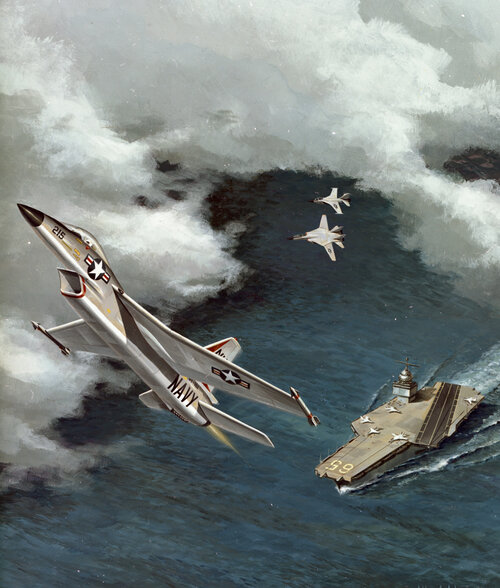
The design looks a little different, and the date (7 November 1963) seems a little early for the Sea Control Ship program. Any ideas?
View: https://www.flickr.com/photos/sdasmarchives/53718641178
Last edited by a moderator:
- Joined
- 27 December 2005
- Messages
- 17,701
- Reaction score
- 26,086
We discussed this in May 2024.
Its a lightweight fighter study from early seventies, ancestral to Model 200 studies as per this diagram.

Its a lightweight fighter study from early seventies, ancestral to Model 200 studies as per this diagram.
Last edited:
Similar threads
-
REQUIREMENT: US Navy VFA - V/STOL Fighters for Sea Control Ships
- Started by overscan (PaulMM)
- Replies: 5
-
The Convair Model 200 / 201 /218 TL
- Started by Archibald
- Replies: 13
-
VFAX (1974) / NACF Projects (Pre F/A-18 concepts)
- Started by overscan (PaulMM)
- Replies: 53
-
VSS - VSTOL Support Ship - exotic air group
- Started by Archibald
- Replies: 112
-
General Dynamics (Convair) ASW V/STOL seaplane
- Started by hesham
- Replies: 4

